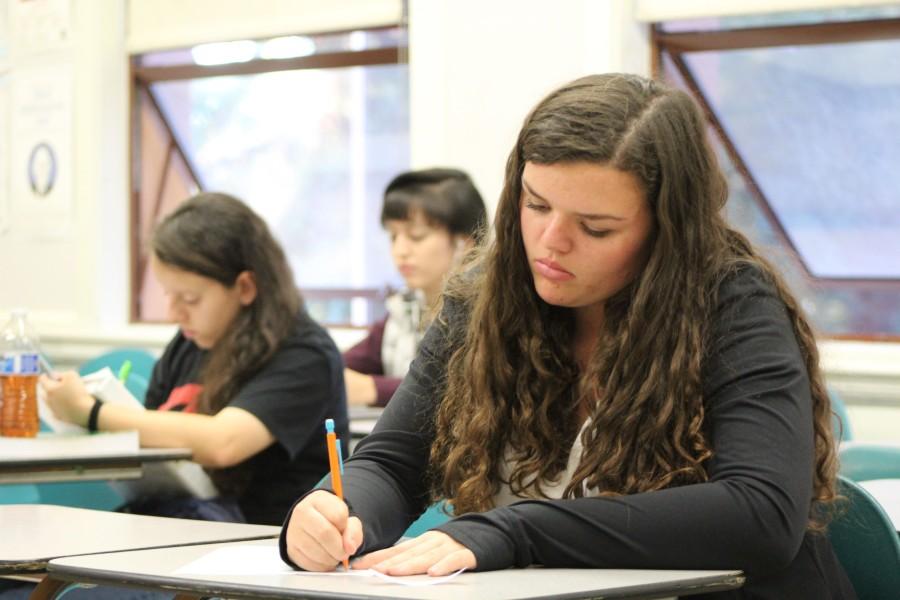Academic programs support school in stepping over achievement gap
Junior Nova Mitchell spends afternoons in AVID, one of Sequoia’s efforts to close the achievement gap. In AVID, students learn skills to help them succeed in college.
November 13, 2015
Why does one student go to a community college when another goes to UCLA?
The achievement gap is one reason.
For the first time this year, Sequoia is working with Equal Opportunity Schools (EOS), an organization that advocates for better representation of non-white students of low socio-economic status in International Baccalaureate (IB) and Advance Placement (AP) classes and detects the students that can be in more rigorous courses. EOS works to minimize the achievement gap by encouraging diversity in upper-level classes and preparing students for college.
The achievement gap is a term to describe the imbalance in successful lower-income students and high-income students of different races; it’s usually measured using high school graduates and dropouts, GPAs, and standardized-test results.
“It’s so important that everybody be able to reach their potential,” Theory of Knowledge and English teacher Lisa Gleaton said. “Every student that walks in has amazing potential, but there are barriers that come up in the way and we have to get rid of them.”
The IB Program’s mission for all schools, including Sequoia, is to help students develop intellectual understanding and respect for every person, culture, institution and challenge.
“One of Sequoia’s goals is to have every student at Sequoia take at least one IB class,” IB Environmental Studies and Bio teacher Jessica Magallanes said in an email interview. Students know the IB program as a very difficult but beneficial program.
“For IB, just the level of work that you’re doing prepares you for college,” senior Genaro Solorio said. “If you’re successful in IB, you know you’ll be successful in any college that you go to.”
IB and EOS are just two programs and organizations assisting Sequoia students develop the capability to learn more advanced material and push themselves along the way.
“We really want to encourage students to push themselves and challenge themselves in a rigorous curriculum that prepares them for college,” said IB History teacher Teresa Yeager, the coordinator for Advancement Via Individual Determination (AVID).
Because 47 percent of students come from economically disadvantaged backgrounds and 64 percent have parents with, at most, a high school diploma, programs here have been instituted to help lower the achievement gap, and it has worked to some degree.
In the Sequoia Union High School District (SUSHD) around 79 percent of white graduates last year completed A-G requirements while only 43 percent of Hispanic completed the requirements. However, this is lower than it was just three years ago, with 70 percent of white graduates completed the requirements when 29 percent of Hispanic graduates did so. Similarly, socio-economically disadvantaged graduates went from 27 percent to to 37 percent completing them in the last three years. Could it be worse, though?
“I think Sequoia is ahead of most schools in that we are actively working to close the achievement gap.” Magallanes said.
AVID is one of the programs at Sequoia that prepares these students for college and introduces skills that will help them succeed.
“[AVID] helps you find a college you want to go to, and they offer a bunch of different scholarships so that if you can’t afford to go to college, you can get it in,” freshman Emily Knopf said.
With the San Mateo County Local Elections having ended Nov. 3, where one seat got reassigned out of the three contested, and enrollment across the district increases, the discussion of the achievement gap is just a stepping stone for it to be lowered.







